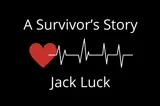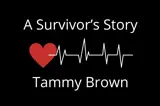It’s a true privilege to welcome you here today to our annual Survivor Day — a day that stands apart in the calendar, not because of pageantry or protocol, but because of purpose. This is a day of reunions. A day of gratitude. A day where we stop — even if just briefly — to recognize the remarkable stories of survival that unfolded in our community over the past year.
Each of these stories has one thing in common: someone’s life was hanging in the balance … and a team showed up.
That team may have started with a bystander who called 911, someone who didn’t freeze in the moment but chose to act. It would have included an ambulance communications officer who calmly gathered information and directed help. It included paramedics, firefighters, Canada Border Service Officers, police officers, emergency department and many other hospital staff, and sometimes strangers in the community who stepped forward. Today is about them. And it’s about you — our survivors — who are living, breathing testaments to what happens when a system works, when training meets courage and when hope meets action.
Survivor Day gives us a chance to reunite people who met under the most difficult, unplanned and emotional circumstances. Everyone involved in these circumstances might recognize a voice, a face or a name — but today they get to see what they rarely do: the outcome. Life lived. Futures restored.
This is also a day where we reflect on the full story. Because as much as we are here to celebrate the successes, we also carry with us the memory of those we could not bring back. Not because we didn’t try — we always try — but because sometimes, despite every effort, nature takes its course. To the families of those we lost and to all of you who carry their stories forward, please know you are not forgotten. Your loved ones mattered. Their stories matter.
To all the survivors with us today: thank you. Your presence is powerful. You are the “why” behind everything we do. Your lives remind us that every call has potential. Every second matters. And every link in the chain — from the first compression to the final handoff and discharge from the hospital — makes a difference.
In 2024, we provided life-saving interventions to 373 members of our community. We are celebrating 26 who survived. That’s roughly a seven per cent survival rate. According to the National Institutes of Health, the survival rate in Ontario is generally around five to six per cent. So, what can we do differently to improve that number? We focus on making sure our paramedics are using the best equipment and are receiving the training they need for peak performance. We collaborate with other public safety personnel and hospitals to ensure we’re using evidence-based best practices. We share data, review cases and continue to adjust our approach.
Another initiative that we’ve been working hard on is increasing the number of people in our community who know CPR (cardiopulmonary resuscitation) and how to use an AED (automated external defibrillator), so that when the time comes, they can do something. In a year’s time, we have provided over 100 CPR and AED sessions that educated 1,800 people. As well, 1,300 AEDs have been registered through Pulse Point so that our ambulance communications officers can direct callers to their locations. Ten community participants are now installing AEDs outdoors, which ensures access to an AED is not limited by business hours. A quick note to our members of council here with us today, without a doubt, we’re able to do all of this because of your support, and we thank you.
This week, we mark Paramedic Services Week, a time to honour a profession rooted in innovation, resilience and service. From the earliest recorded patient transport over a thousand years ago to the modern, high-acuity care paramedics deliver today, we have come a long way. Ontario paramedics now provide life-saving interventions in the field that were once only possible in hospitals — intubation, defibrillation, dozens of medications and complex decision-making under pressure. And still, we push forward — seeking new treatments, new tools and better ways to serve our communities.
It’s also important to acknowledge that we don’t do this alone. We are part of a larger network — a tapestry of people and organizations all working toward a shared mission: to preserve life and reduce suffering. From our partners in fire, police, border services, hospitals, communications and base hospital to our members of provincial parliament, everyone at the County of Essex, City of Windsor, local municipalities of Amherstburg, Essex, Kingsville, LaSalle, Lakeshore, Leamington and Tecumseh, and the Township of Pelee – this is all of your success, too. We even have representation from Zoll Medical Devices in the room today. They make the very defibrillators that restarted the hearts of our survivors.
A special thank you to our sponsors:
- Baron Championship Rings, whose commitment to this event began not from a business deal, but from a very real, very human experience right here in our region. Their continued generosity and partnership have added a special symbol of pride for our responders — Survivor Day pins — worn not just as accessories, but as reminders of impact.
- St. Clair College and the St. Clair College Alumni Association for providing this venue and the refreshments at the back of the room. St. Clair College is a true partner in our community, not only in training many of the paramedics at Essex Windsor EMS, but also continuing to support us on this journey.
As we hear the stories today, I encourage each of you to pause — to really feel the gravity of what’s being shared. These are people who didn’t know their lives were going to change forever that day. They are mothers, fathers, sisters, brothers, sons and daughters … just like all of us. Their survival reminds us of the fragility of life — and the power of what we can achieve together.
So, let today be a reminder: our time is precious. Let us not wait for moments of crisis to appreciate what we have, to thank those who serve and to honour the connections that make life meaningful.
To everyone who played a role in these stories — thank you. Your dedication, skill and humanity gave someone another birthday, another hug, another sunrise.
Let us carry that spirit forward — not just today, but in every moment that follows.




































